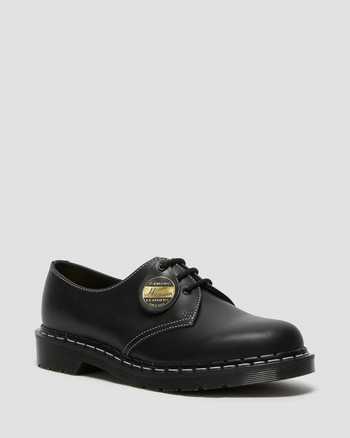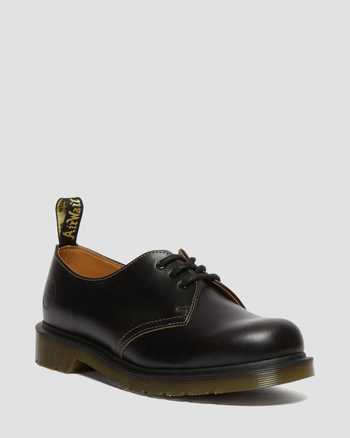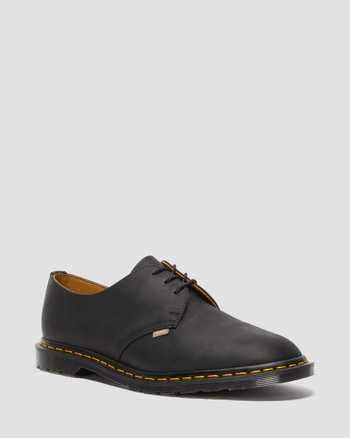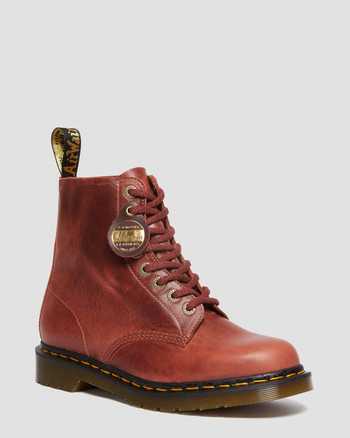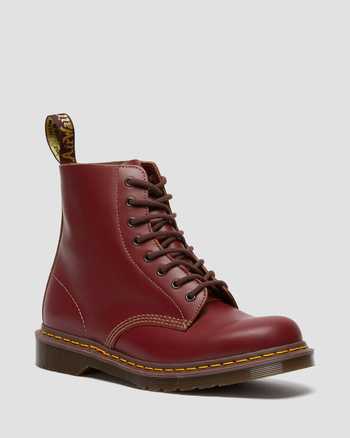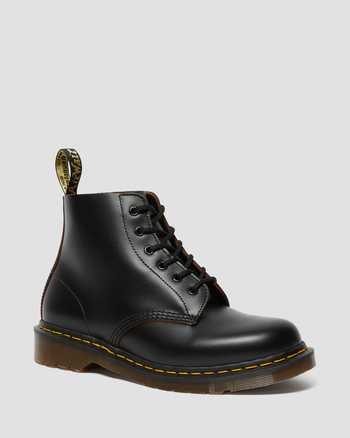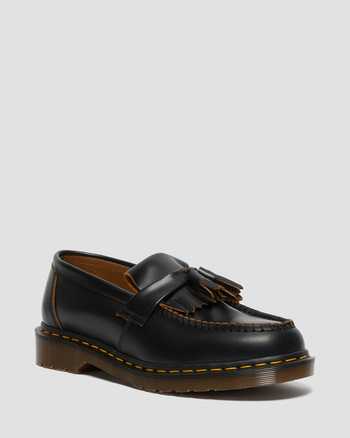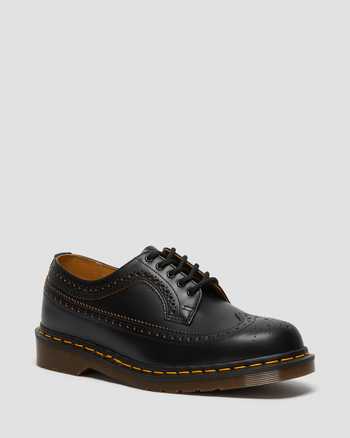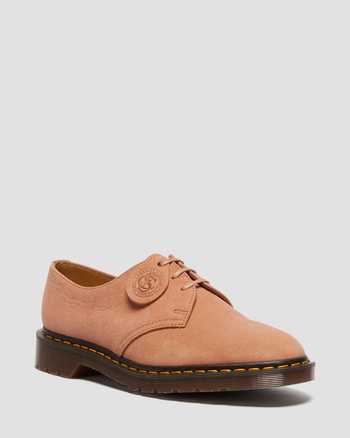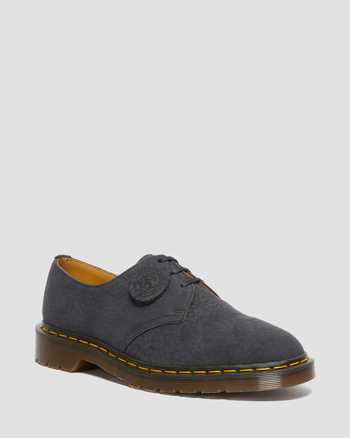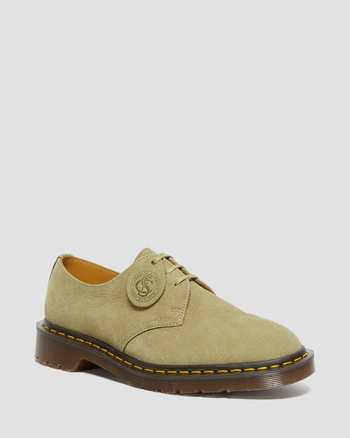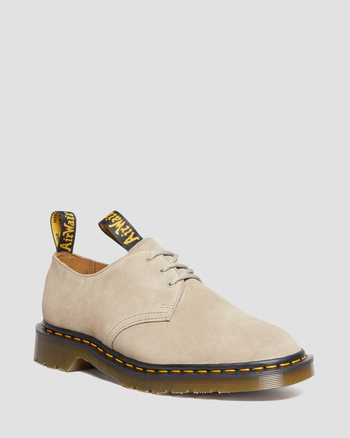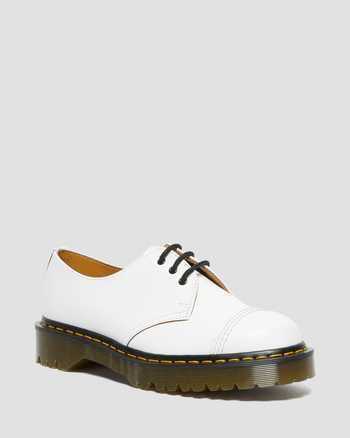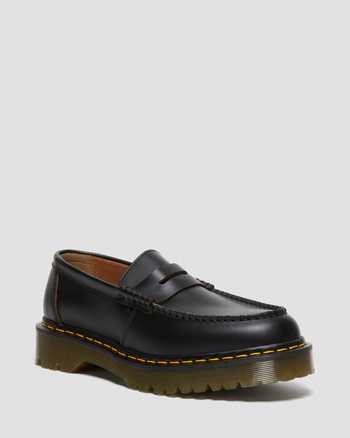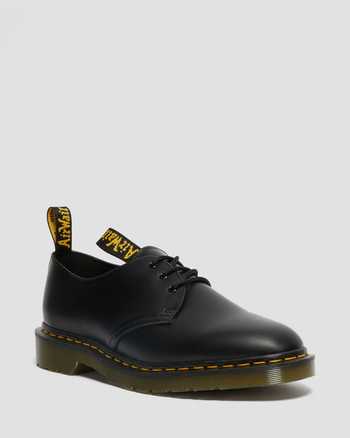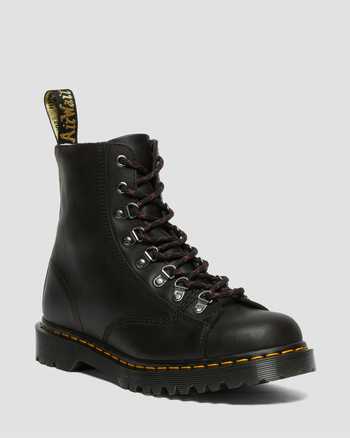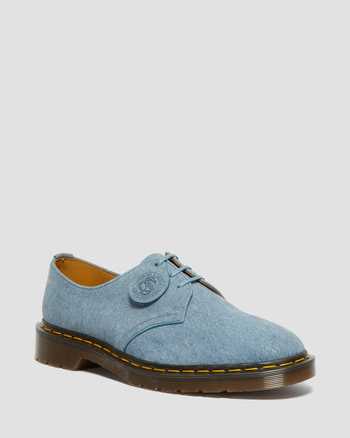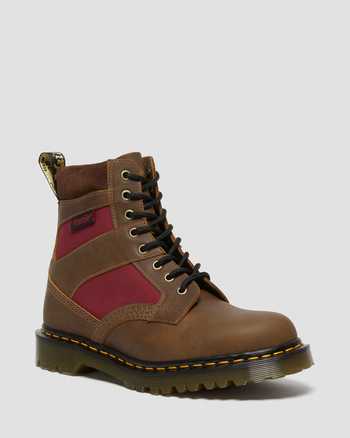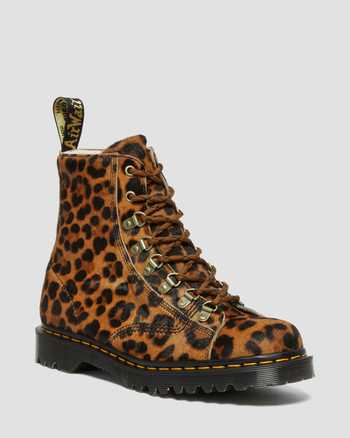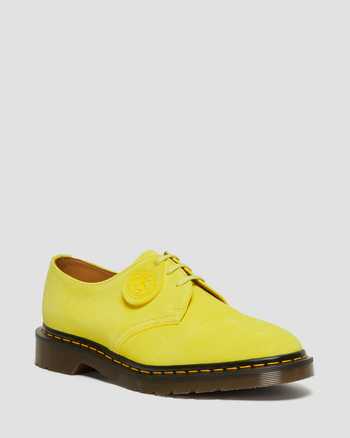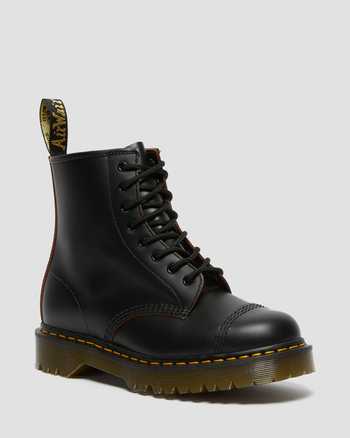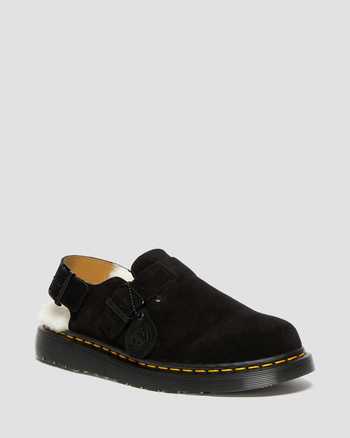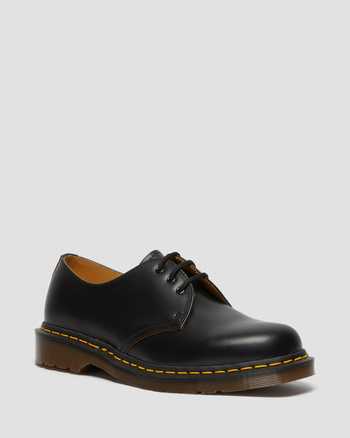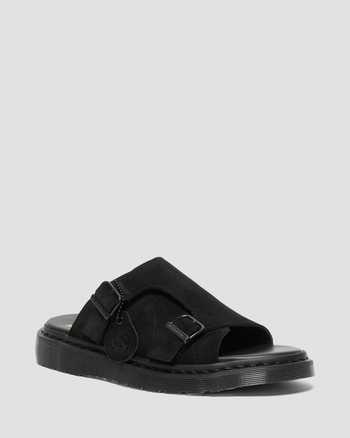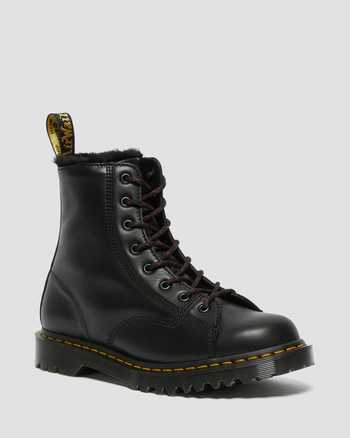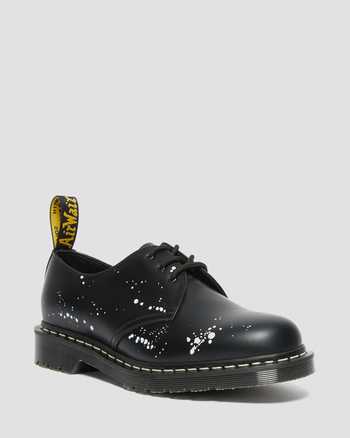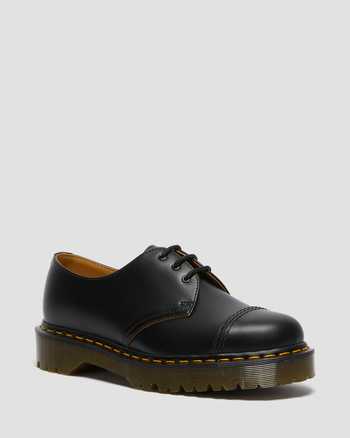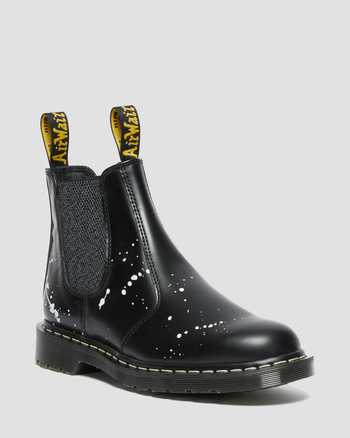Made our way. For a lifetime
Our original Wollaston factory is where the story begins. Our makers bring their own experience and individuality to the shoes they craft. But they were part of the Dr. Martens community long before they first stepped foot in the factory, and they know better than anyone that DM’s is about more than boots and shoes.
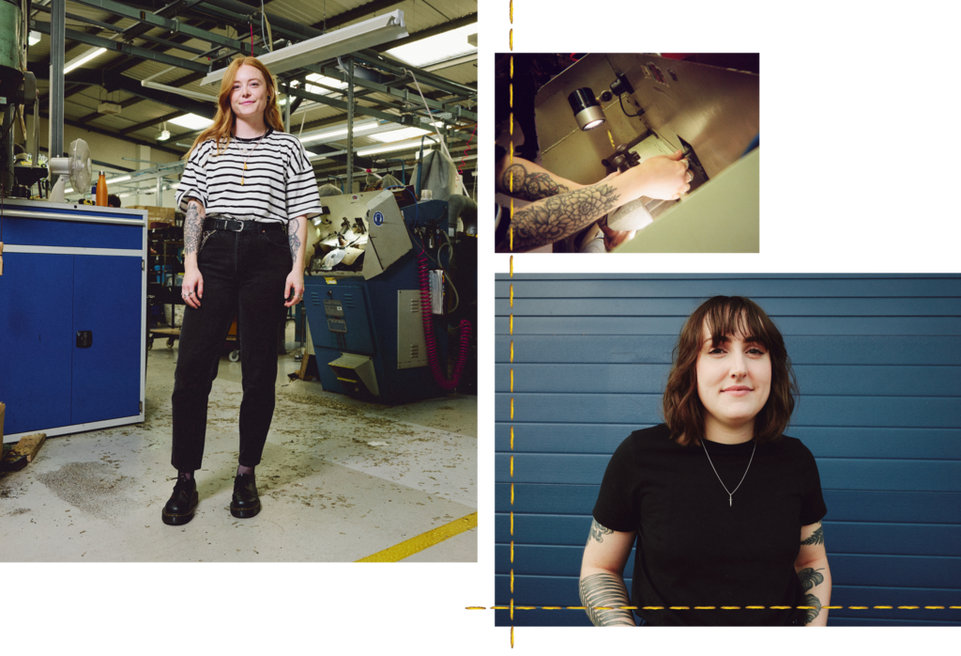
Made our way. For a lifetime

Our original Wollaston factory is where the story begins. Our makers bring their own experience and individuality to the shoes they craft. But they were part of the Dr. Martens community long before they first stepped foot in the factory, and they know better than anyone that DM’s is about more than boots and shoes.

Dr. Martens: Let’s kick off with an easy question: what makes Dr. Martens more than just a footwear brand?
Gemma: DM’s promotes individuality and self-expression. It’s not just a shoe or a boot — it’s a whole identity. They encourage everyone to be their authentic self. Be bold and brave.
Sarah: I agree with Gem. I think the DM’s experience is so unique and personal to each person. It’s a way of life for many. An integral part of their identity and the people they relate to.
Dr. Martens: Your positions in the factory are traditionally regarded as “big tough guy” roles — how d’you feel about that?
Sarah: I’m incredibly proud of being the first woman of the 21st century to edge trim and heat seal. I’ve loved the opportunity to step up and prove myself in a male-dominated industry. It’s been great to see more and more women thrive in jobs on the lasting track.
Gemma: I love it. Whenever a tour comes around, and I hear my job described as “the hardest, most dangerous job on the factory floor”, I feel so proud. It’s a massive sense of accomplishment. We — and all the other women here — have worked hard to prove ourselves in this male-dominated environment. It’s great to show them we can do what they can. Sometimes better than they can.

Dr. Martens: Let’s kick off with an easy question: what makes Dr. Martens more than just a footwear brand?
Gemma: DM’s promotes individuality and self-expression. It’s not just a shoe or a boot — it’s a whole identity. They encourage everyone to be their authentic self. Be bold and brave.
Sarah: I agree with Gem. I think the DM’s experience is so unique and personal to each person. It’s a way of life for many. An integral part of their identity and the people they relate to.
Dr. Martens: Your positions in the factory are traditionally regarded as “big tough guy” roles — how d’you feel about that?
Sarah: I’m incredibly proud of being the first woman of the 21st century to edge trim and heat seal. I’ve loved the opportunity to step up and prove myself in a male-dominated industry. It’s been great to see more and more women thrive in jobs on the lasting track.
Gemma: I love it. Whenever a tour comes around, and I hear my job described as “the hardest, most dangerous job on the factory floor”, I feel so proud. It’s a massive sense of accomplishment. We — and all the other women here — have worked hard to prove ourselves in this male-dominated environment. It’s great to show them we can do what they can. Sometimes better than they can.
“It’s messy. Loud. Dangerous. What’s not to love?” — Gemma
Dr. Martens: You both started life at DM’s as apprentices — what was your favourite part of that process?
Sarah: As an apprentice, I had the opportunity to design and make my own custom pair of DM’s. It was really special: being able to use all the skills I’d learnt to make a pair of boots from start to finish.
Gemma: I agree with Sarah! Having the chance to make my very own pair from start to finish was an awesome opportunity. That, and learning the machinery. It’s great being so skilled at my current job, but I had such a fun time learning it. The feeling I had when I trimmed my first pair was amazing.
Dr. Martens: What’s your best memory in a pair of DM’s boots?
Gemma: Going to my first festival and having one of the best weekends of my life. I felt so free and happy. I danced a ridiculous amount — and my boots were so muddy I couldn’t tell what colour they were anymore. Those boots are still going strong even now.
Sarah: Buying and wearing my first pair of Docs. I was about 13, and they were black 1460 Patent boots. I remember putting them on and feeling so empowered — like such a badass!
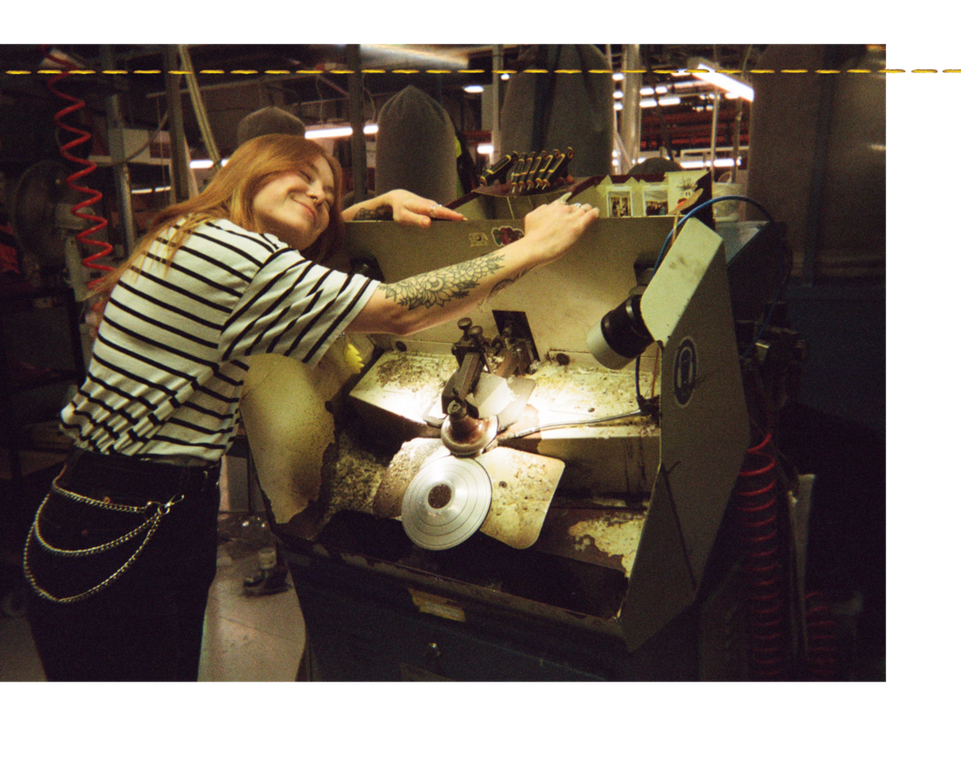

Dr. Martens: You both started life at DM’s as apprentices — what was your favourite part of that process?
Sarah: As an apprentice, I had the opportunity to design and make my own custom pair of DM’s. It was really special: being able to use all the skills I’d learnt to make a pair of boots from start to finish.
Gemma: I agree with Sarah! Having the chance to make my very own pair from start to finish was an awesome opportunity. That, and learning the machinery. It’s great being so skilled at my current job, but I had such a fun time learning it. The feeling I had when I trimmed my first pair was amazing.
Dr. Martens: What’s your best memory in a pair of DM’s boots?
Gemma: >Going to my first festival and having one of the best weekends of my life. I felt so free and happy. I danced a ridiculous amount — and my boots were so muddy I couldn’t tell what colour they were anymore. Those boots are still going strong even now.
Sarah: Buying and wearing my first pair of Docs. I was about 13, and they were black 1460 Patent boots. I remember putting them on and feeling so empowered — like such a badass!
“I once climbed the roof of my old school with friends in my boots and watched the world for a while.
They’re the pair I wear most now.” — Gemma
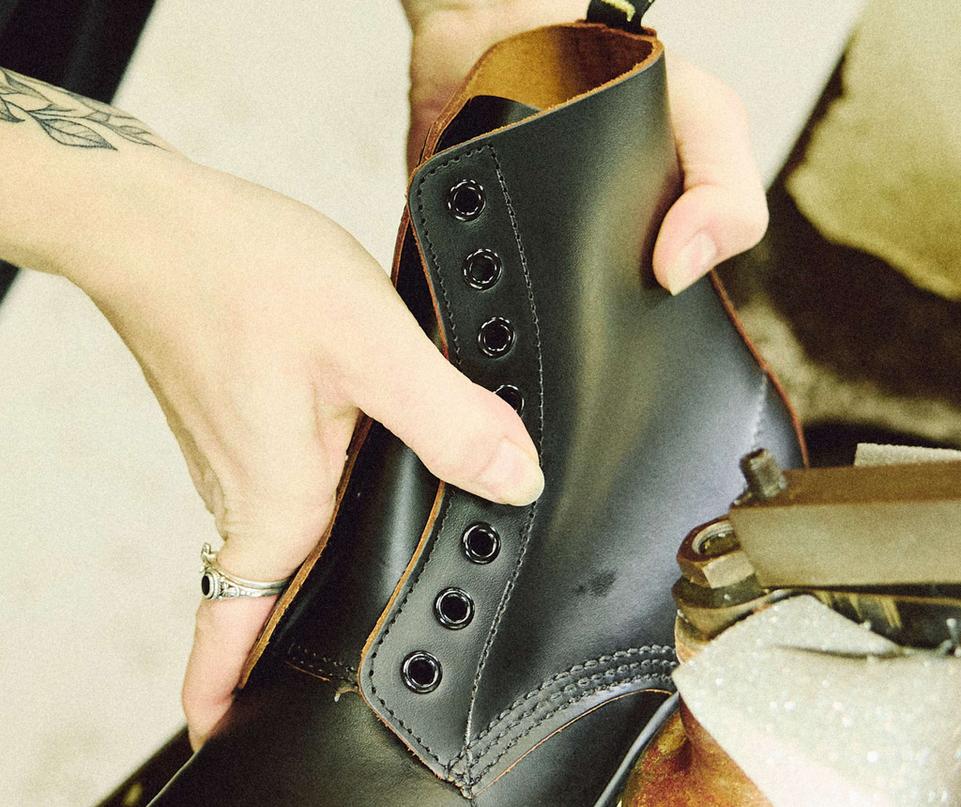
“I once climbed the roof of my old school with friends in my boots and watched the world for a while. They’re the pair I wear most now.” — Gemma
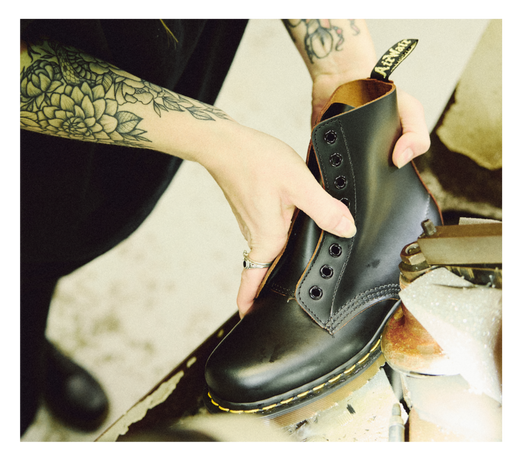
Dr. Martens: Do you have a favourite memory from the factory floor?
Sarah: I remember being in awe when I had my first factory tour during my apprenticeship interview. Seeing the boots I’d idolised for so long coming to life. I was especially captivated by the distinctive yellow welt thread being sewn. It’s crazy to think I would go on and learn how to make them myself.
Gemma: Mine is also from my apprentice days. I brought my mum in for a tour — we’ve always been huge fans of DM’s and always shopped at the factory shop round the corner. We’d wanted to go on a tour so many times but missed out. So being able to give her a tour — and showing her everything I’d learnt — was quite special for both of us.
Dr. Martens: What’s the importance of passing down traditional methods and working with your hands?
“We leave a little bit of ourselves in every pair — that’s the beauty of handmade craftsmanship.” — Sarah
Sarah: We have to preserve the knowledge and heritage that got us to where we are today. It helps us educate and influence the future.
Gemma: It’s important to remember how we started. To see how we’ve evolved and learnt over the years. It’s cool to see new technologies, like robots doing what we can do — but for me, it’s way cooler knowing someone has spent time and effort mastering their craft to create something wonderful.
Sarah: We all have different ways of completing a process, so there are subtle nuances you can notice about each person’s work. We leave a little bit of ourselves in every pair — and that’s the beauty of handmade craftsmanship.
Gemma: There’s so much skill in shoemaking — which I’d never given much thought to before joining DM’s. And it’s physically demanding, so I take great pride in my work. It’s a lot of expertise, physical effort and time. That’s what makes it so special.
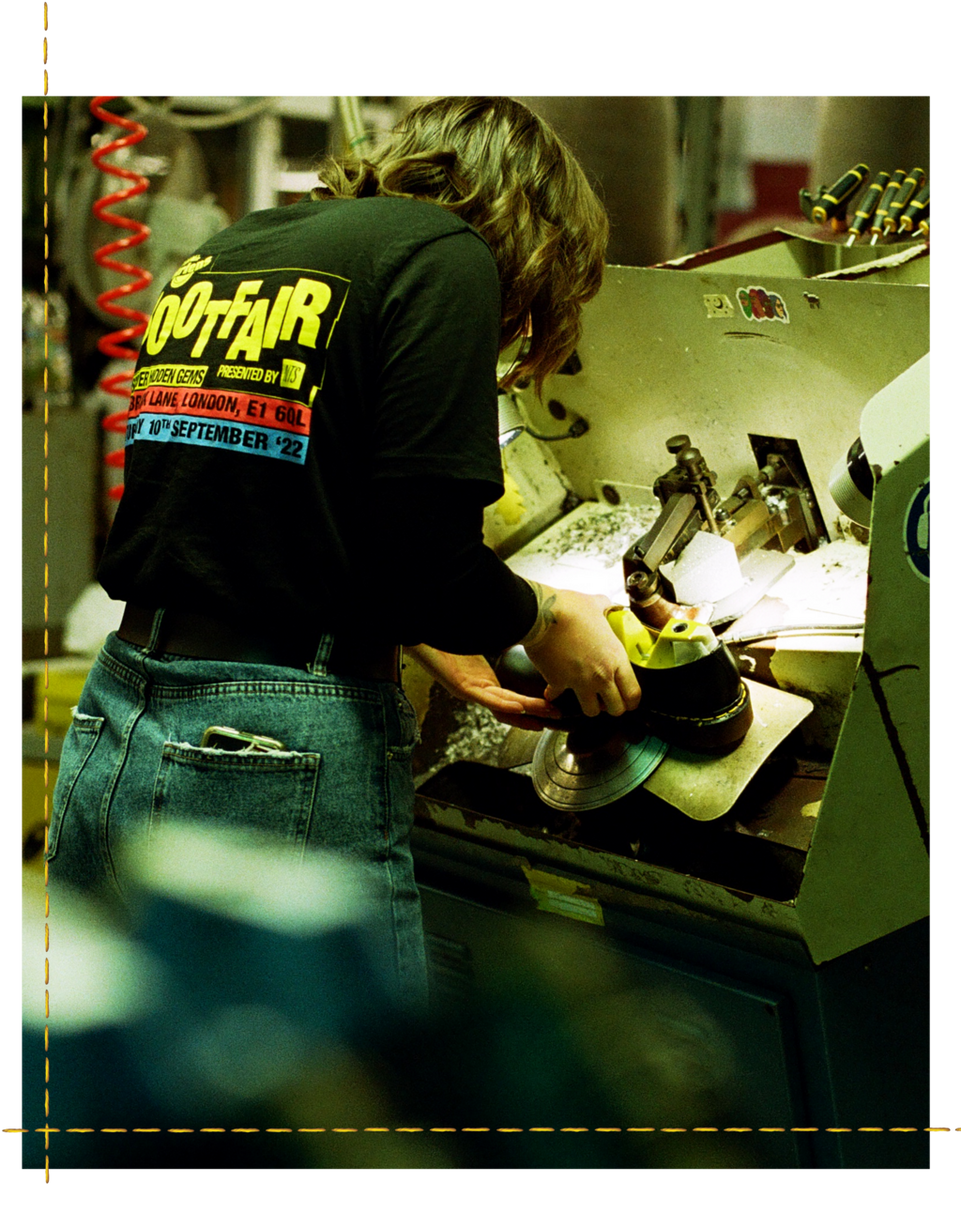
Dr. Martens: Do you have a favourite memory from the factory floor?
Sarah: I remember being in awe when I had my first factory tour during my apprenticeship interview. Seeing the boots I’d idolised for so long coming to life. I was especially captivated by the distinctive yellow welt thread being sewn. It’s crazy to think I would go on and learn how to make them myself.
Gemma: Mine is also from my apprentice days. I brought my mum in for a tour — we’ve always been huge fans of DM’s and always shopped at the factory shop round the corner. We’d wanted to go on a tour so many times but missed out. So being able to give her a tour — and showing her everything I’d learnt — was quite special for both of us.
Dr. Martens: What’s the importance of passing down traditional methods and working with your hands?
“We leave a little bit of ourselves in every pair — that’s the beauty of handmade craftsmanship.” — Sarah
Sarah: We have to preserve the knowledge and heritage that got us to where we are today. It helps us educate and influence the future.
Gemma: It’s important to remember how we started. To see how we’ve evolved and learnt over the years. It’s cool to see new technologies, like robots doing what we can do — but for me, it’s way cooler knowing someone has spent time and effort mastering their craft to create something wonderful.
Sarah: We all have different ways of completing a process, so there are subtle nuances you can notice about each person’s work. We leave a little bit of ourselves in every pair — and that’s the beauty of handmade craftsmanship.
Gemma: There’s so much skill in shoemaking — which I’d never given much thought to before joining DM’s. And it’s physically demanding, so I take great pride in my work. It’s a lot of expertise, physical effort and time. That’s what makes it so special.
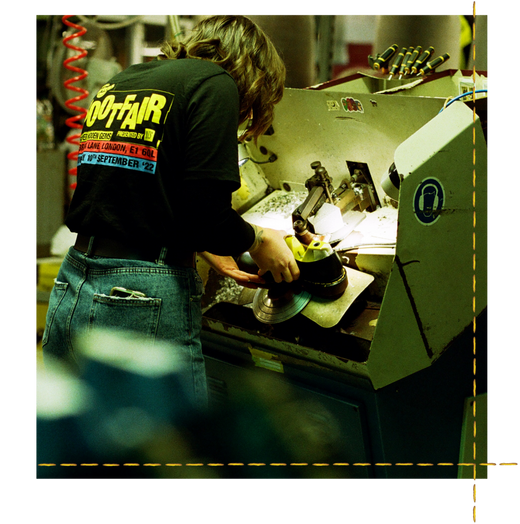
“I’ve been involved in training new generations of apprentices.
I’m so proud of being able to pass on my knowledge and watch them succeed.” — Sarah

Dr. Martens: Do you have any fun cobbling facts to share?
Gemma: Shoe measuring used to be done with a grain of barley known as barleycorn: 3 barleycorns = 1 inch. It became the standard for shoe sizing!
Sarah: Before the early 1800s, there was no difference between the right and left shoe. Most shoes were made on completely straight lasts.
Dr. Martens: One more impossible task before you go. How would you describe DM’s attitude in 3 words?
Gemma: Passionate. Fun. Bold.
Sarah: Inclusive. Unique. Proud.
Dr. Martens: Do you have any fun cobbling facts to share?
Gemma: Shoe measuring used to be done with a grain of barley known as barleycorn: 3 barleycorns = 1 inch. It became the standard for shoe sizing!
Sarah: Before the early 1800s, there was no difference between the right and left shoe. Most shoes were made on completely straight lasts.
Dr. Martens: One more impossible task before you go. How would you describe DM’s attitude in 3 words?
Gemma: Passionate. Fun. Bold.
Sarah: Inclusive. Unique. Proud.






